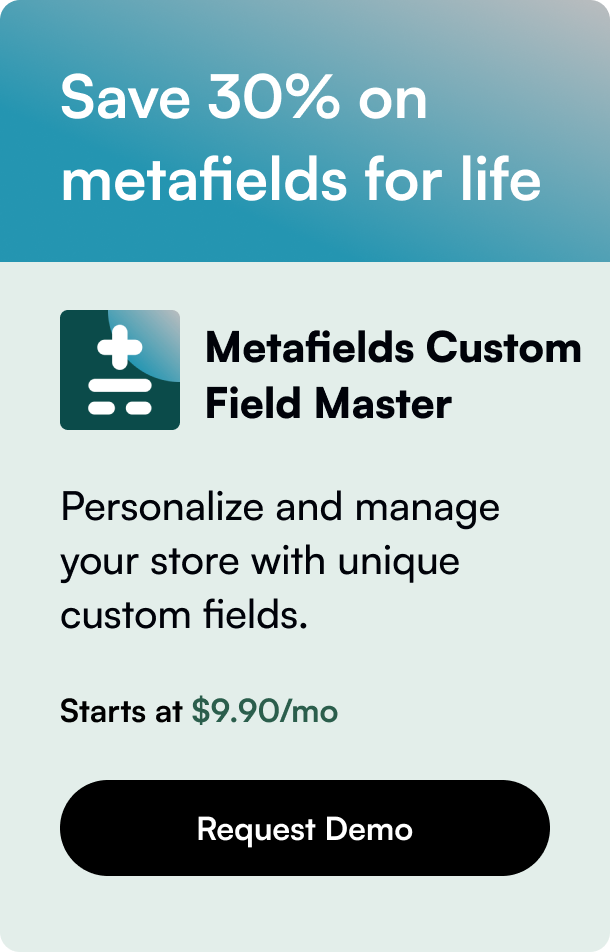Table of Contents
- Introduction
- Understanding the Basics of Shopify Sections
- Step-by-Step Guide to Adding Sections
- Advanced Customization with Metafields and Dynamic Sources
- Conclusion
- FAQ
Introduction
Are you looking to spice up your Shopify page with more personalized and engaging content? With the ever-evolving digital marketplace, creating a captivating and user-friendly online store has never been more crucial. Interestingly, 38% of visitors will stop engaging with a website if the content or layout is unattractive. This statistic underlines the importance of well-structured and aesthetically pleasing pages. In this comprehensive guide, we delve into adding sections to any Shopify page, a fundamental step towards achieving a customized and appealing online store. Whether you're a seasoned Shopify user or new to the platform, this post will equip you with practical insights to elevate your store's design and functionality, setting you apart from the competition.
Understanding the Basics of Shopify Sections
Shopify themes utilize a building-block approach, comprising sections and blocks, to organize content on your store’s pages. This modularity provides the flexibility to control the layout and appearance of your online store without delving into complex coding. A section can be anything from a single image to a collection of products, while blocks within these sections serve specific functions like displaying text or links. Given that each Shopify theme supports a different set of sections, the options and creativity at your disposal are vast.
Step-by-Step Guide to Adding Sections
Creating a Test Page
Before making significant changes to your live store, it's wise to create a test page. This sandbox environment allows you to experiment with different sections and configurations without impacting your current page setup. Navigate to your Shopify admin, select "Pages," then click on "Add page" to establish your sandbox.
Utilizing Theme Templates
To start integrating new sections, you might need to create or modify theme templates. Shopify’s flexible infrastructure allows you to generate new templates tailored to specific pages, establishing a unique layout for any part of your online presence.
Create a New Theme Template
- In your Shopify admin, go to "Online Store" > "Themes."
- Choose your current theme and click on "Actions" > "Edit code."
- Under the "Templates" directory, click "Add a new template." Choose the type of page you’re creating this template for and give it a meaningful name.
Adding Sections to Your Custom Template
With your new template created, it's time to add sections to it. Navigate to the "Sections" directory within the theme code editor. Here, you can either modify existing sections or create new ones to suit your page.
- To add a new section, click on "Add a new section" and name it appropriately.
- Inside your new section file (which uses the
.liquidextension), you can define the structure of your section using HTML and Liquid, Shopify’s templating language. Refer to Shopify's comprehensive documentation for specifics on coding custom sections.
Incorporating Rich Text or Other Blocks
Within each section, you might want to add different types of blocks, such as rich text, images, or product collections. This is where your creativity can shine, and you can tailor your page to match your brand’s identity and goals.
- In the section’s
.liquidfile, define the types of blocks it will contain. - Utilize Shopify’s schema tags to set up customizable fields in the theme editor for each block.
Previewing and Adjusting Your New Sections
Back in the Shopify admin, you can now preview your changes by choosing the template you modified from the theme editor. This interactive preview lets you see your new sections in action and tweak them in real-time without coding.
Advanced Customization with Metafields and Dynamic Sources
For those seeking to display more dynamic content based on product details or collection information, Shopify’s metafields and dynamic sources provide a powerful solution. By connecting metafields to your sections, you can showcase tailored information like product specifications, collection descriptions, or any other custom data relevant to your store.
Final Touches and Going Live
Once satisfied with your test page and the new sections, it’s time to implement these changes on your live pages. You can replicate the steps above on your actual pages or utilize the template created during testing by assigning it to the desired pages through the Shopify admin.
Conclusion
Incorporating new sections into your Shopify pages is not merely about enhancing aesthetics; it’s a strategic move to improve user experience, engagement, and conversion rates. By following this guide, you’ve taken a crucial step towards creating a more dynamic, customized, and effective online store. As you continue to experiment and refine your store’s layout, remember that the ultimate goal is to resonate with your audience and make their shopping experience memorable and seamless.
FAQ
-
Can I add sections to any Shopify theme? Yes, with the latest Shopify themes supporting sections everywhere, you can add custom sections to virtually any part of your store, regardless of the theme.
-
Do I need to know how to code to add sections? Basic tasks can be done without coding knowledge using the theme editor. However, for more complex customizations, a basic understanding of HTML, CSS, and Liquid is beneficial.
-
Can I use these steps for both Shopify and Shopify Plus? Absolutely, these steps apply to both Shopify and Shopify Plus stores.
-
How can I ensure my custom sections are mobile-responsive? Use CSS media queries within your section’s code to adjust layouts and styles for different screen sizes, ensuring a seamless experience across devices.
-
What should I do if I encounter issues while adding sections? Shopify’s extensive documentation, community forums, and support channels are great resources. Alternatively, consider hiring a Shopify Expert for more complex customizations.








